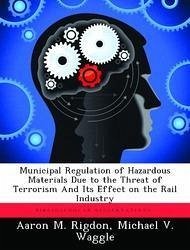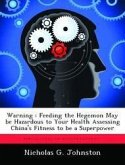Hazardous materials transport and regulation is coming under severe scrutiny in response to terrorism concerns following the events of September 11, 2001. This increased scrutiny, combined with a lack of a coherent protection strategy from either the Department of Transportation or the Department of Homeland Security, has led municipalities to begin to regulate the shipment of hazardous materials. In February 2005, Washington DC signed into law the Terrorism Prevention in Hazardous Materials Transportation Emergency Act, effectively banning the transportation of ultra-hazardous materials through the city. Municipal reaction to the actions taken by District of Columbia has been varied and widespread. Using both a meta-analysis and a case study methodology, this project analyzes the impacts of the current terrorist environment in an attempt to determine the potential of additional municipal regulation of hazardous materials transportation via rail. Since the case study methodology did not result in any direct data, the research team applied the meta-analysis technique to answer the research and investigative questions through the literature review.
Hinweis: Dieser Artikel kann nur an eine deutsche Lieferadresse ausgeliefert werden.
Hinweis: Dieser Artikel kann nur an eine deutsche Lieferadresse ausgeliefert werden.


![The First Annual Report of the Central Auxiliary Society for Promoting Education and Industry in Canada [microform]: Submitted to the Public Meeting H The First Annual Report of the Central Auxiliary Society for Promoting Education and Industry in Canada [microform]: Submitted to the Public Meeting H](https://bilder.buecher.de/produkte/66/66139/66139857m.jpg)





